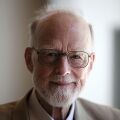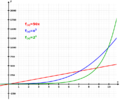Template:Selected anniversaries/January 11: Difference between revisions
No edit summary |
No edit summary |
||
| Line 3: | Line 3: | ||
File:English Lottery 1566 Scroll.jpg|link=Lottery (nonfiction)|1569: First recorded [[Lottery (nonfiction)|lottery]] in England. | File:English Lottery 1566 Scroll.jpg|link=Lottery (nonfiction)|1569: First recorded [[Lottery (nonfiction)|lottery]] in England. | ||
File:Didacus automaton profile.jpg|link=Didacus automaton (nonfiction)|1570: [[Didacus automaton (nonfiction)|Didacus automaton]] uses [[Gnomon algorithm]] to predict winning [[Lottery (nonfiction)|lottery numbers]]. | File:Didacus automaton profile.jpg|link=Didacus automaton (nonfiction)|1570: [[Didacus automaton (nonfiction)|Didacus automaton]] uses [[Gnomon algorithm]] to predict winning [[Lottery (nonfiction)|lottery numbers]]. | ||
File:Niels Steensen.png|link=Niels Steensen (nonfiction)|1638: Scientist and bishop [[Niels Steensen (nonfiction)|Niels Steensen]] born. He will question explanations for tear production, the idea that fossils grow in the ground. | File:Niels Steensen.png|link=Niels Steensen (nonfiction)|1638: Scientist and bishop [[Niels Steensen (nonfiction)|Niels Steensen]] born. He will question explanations for tear production, the idea that fossils grow in the ground. | ||
File:Bartolomeu Lourenço de Gusmão.jpg|link=Bartolomeu de Gusmão (nonfiction)|1711: Inventor and priest [[Bartolomeu de Gusmão (nonfiction)|Bartolomeu de Gusmão]] collaborates with [[Didacus automaton (nonfiction)|Didacus automaton]] on design of new [[Airship (nonfiction)|airship]]. | File:Bartolomeu Lourenço de Gusmão.jpg|link=Bartolomeu de Gusmão (nonfiction)|1711: Inventor and priest [[Bartolomeu de Gusmão (nonfiction)|Bartolomeu de Gusmão]] collaborates with [[Didacus automaton (nonfiction)|Didacus automaton]] on design of new [[Airship (nonfiction)|airship]]. | ||
File:Samuel Bentham.jpg|link=Samuel Bentham (nonfiction)|1757: engineer and naval architect [[Samuel Bentham (nonfiction)|Samuel Bentham]] born. He will design the first Panopticon. | File:Samuel Bentham.jpg|link=Samuel Bentham (nonfiction)|1757: engineer and naval architect [[Samuel Bentham (nonfiction)|Samuel Bentham]] born. He will design the first Panopticon. | ||
||1786 – Joseph Jackson Lister, English physicist (d. 1869) | |||
||1787 – William Herschel discovers Titania and Oberon, two moons of Uranus. | |||
||1788 – William Thomas Brande, English chemist and academic (d. 1866) | |||
||1800 – Ányos Jedlik, Hungarian physicist and engineer (d. 1895) | |||
||Giuseppe Battaglini (b. 11 January 1826) was an Italian mathematician. | |||
||1845 – Albert Victor Bäcklund, Swedish mathematician and physicist (d. 1912) | |||
||1872 – G. W. Pierce, American physicist and academic (d. 1956) | |||
||1889 – Calvin Bridges, American geneticist and academic (d. 1938) | |||
||1895 – Laurens Hammond, American engineer and businessman, founded the Hammond Clock Company (d. 1973) | |||
||1906 – Albert Hofmann, Swiss chemist and academic, discoverer of LSD (d. 2008) | |||
||1917 – The Kingsland munitions factory explosion occurs as a result of sabotage. | |||
||1922 – First use of insulin to treat diabetes in a human patient. | |||
File:Sir Tony Hoare 2011.jpg|link=Tony Hoare (nonfiction)|1934: Computer scientist [[Tony Hoare (nonfiction)|Tony Hoare]] born. He will go on to invent the quicksort algorithm, and make other contributions to [[Computer science (nonfiction)|computer science]]. | File:Sir Tony Hoare 2011.jpg|link=Tony Hoare (nonfiction)|1934: Computer scientist [[Tony Hoare (nonfiction)|Tony Hoare]] born. He will go on to invent the quicksort algorithm, and make other contributions to [[Computer science (nonfiction)|computer science]]. | ||
File:Exponential-growth-diagram.svg|link=Crimes against mathematical constants|New class of [[crimes against mathematical constants]] targets vulnerable quicksort routines. | |||
||1941 – Emanuel Lasker, German mathematician, philosopher, and chess player (b. 1868) | |||
||1949 – The first "networked" television broadcasts took place as KDKA-TV in Pittsburgh, Pennsylvania goes on the air connecting the east coast and mid-west programming. | |||
||1962 – Cold War: While tied to its pier in Polyarny, the Soviet submarine B-37 is destroyed when fire breaks out in its torpedo compartment. | |||
||1996 – Space Shuttle program: STS-72 launches from the Kennedy Space Center marking the start of the 74th Space Shuttle mission and the 10th flight of Endeavour. | |||
||1988 – Isidor Isaac Rabi, Polish-American physicist and academic, Nobel Prize laureate (b. 1898) | |||
||1991 – Carl David Anderson, American physicist and academic, Nobel Prize laureate (b. 1905) | |||
||2012 – Mostafa Ahmadi-Roshan, Iranian physicist and academic (b. 1980) | |||
||2012 – Steven Rawlings, English astrophysicist, astronomer, and academic (b. 1961) | |||
||2013 – Tom Parry Jones, Welsh chemist, invented the breathalyzer (b. 1935) | |||
||2015 – Vernon Benjamin Mountcastle, American neuroscientist and academic (b. 1918) | |||
File:Exponential-growth-diagram.svg|link=Crimes against mathematical constants|2017: New class of [[crimes against mathematical constants]] targets vulnerable quicksort routines. | |||
</gallery> | </gallery> | ||
Revision as of 18:17, 5 November 2017
1502: Mathematician, cosmographer, and academic Pedro Nunes born. He will be one of the greatest mathematicians of his time, known for his mathematical approach to navigation and cartography.
1569: First recorded lottery in England.
1570: Didacus automaton uses Gnomon algorithm to predict winning lottery numbers.
1638: Scientist and bishop Niels Steensen born. He will question explanations for tear production, the idea that fossils grow in the ground.
1711: Inventor and priest Bartolomeu de Gusmão collaborates with Didacus automaton on design of new airship.
1757: engineer and naval architect Samuel Bentham born. He will design the first Panopticon.
1934: Computer scientist Tony Hoare born. He will go on to invent the quicksort algorithm, and make other contributions to computer science.
2017: New class of crimes against mathematical constants targets vulnerable quicksort routines.







